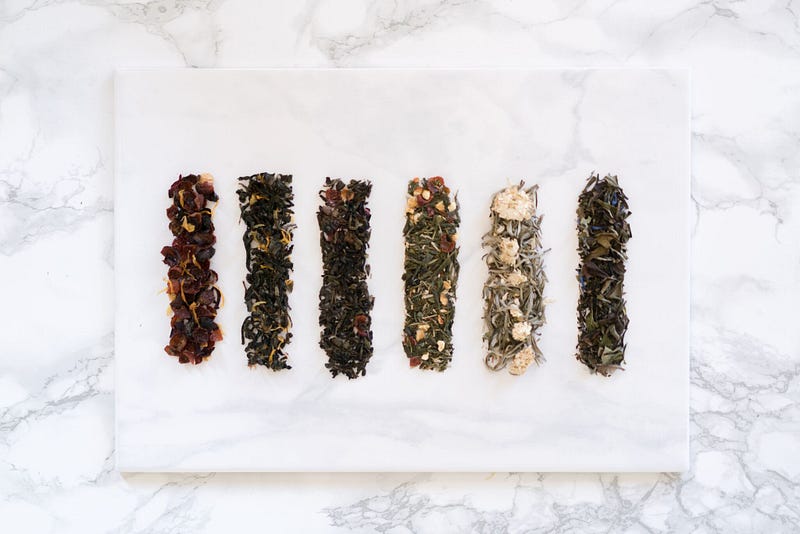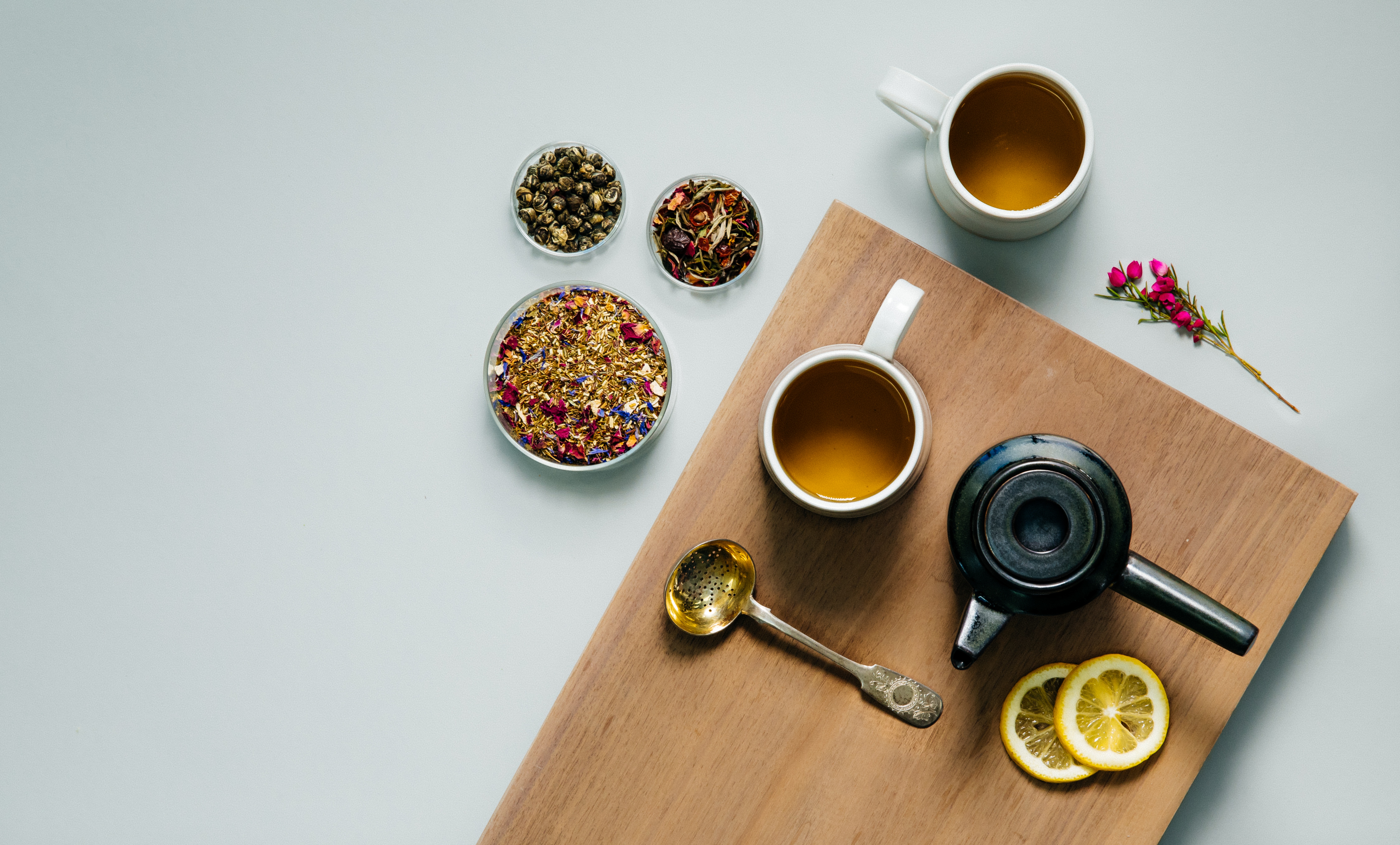All tea (white, green, oolong, black, and pu-erh) comes from the same plant — Camellia sinensis. All teas start out as fresh green leaves before being processed into a specific tea type. It is the cultivated and processed leaves of this plant that create the second most consumed beverage in the world.

Camellia sinensis is a subtropical/tropical evergreen plant native to Asia, though commercially grown all over the world. It takes between 5–7 years before the plant has matured enough to be used in the making of tea, and can be cultivated for more than 100 years. In every pound of finished tea, there are 4.5 pounds of freshly plucked tea leaves, which equates to about 2–3 thousand shoots.
There are five major tea types produced — white, green, oolong, black and pu-erh. It is the processing of the tea at origin that determines which type of tea the freshly plucked leaf will become. During processing, the leaf’s enzymes are exposed to oxygen. This chemical reaction, or oxidation, can transform the green leaf into the many shades of green to brown to black. Oxidation is the processing step that has the greatest impact when determining the tea type. Oxidation is sometimes incorrectly referred to as fermentation. An apple’s flesh turning brown after being cut and the leaves on trees turning colors in fall are both examples of oxidation.
White teas are so named due to the white down that covers the new leaf buds. Traditionally, white teas came only from the Fujian province of China. However, today, any tea that follows the white processing method is considered white tea. White tea is closest to the natural tea plant. Processing methods of white tea do nothing to encourage or stop oxidation. The natural bruising of the leaf during harvesting and transportation allows oxidation to start on part of the leaves. This produces subtle aromatics, taste and color.
Green teas traditionally came from China and Japan; however, the processing methods of each are radically different and produce completely different tea aromatics and taste. Today, green tea comes from most tea producing countries due to its popularity, but is still defined by which processing method was used. Green teas need to keep their fresh green color, for this to happen, oxidation must be limited. Heat is applied to the leaf to arrest oxidation. In China, the heat source that is applied is referred to as pan firing. Due to this, Chinese green teas tend to have a nutty, smoky vegetal taste. In Japan, steam is used as the heat source, thus, Japanese green teas have a brighter emerald leaf color with a more seaweed, fresh taste.
Oolong teas, sometimes referred to as wulong or blue tea by some creative marketers, is the huge bridge between green and black teas. Oolong teas can be as green as green teas and as black as black teas. Oolongs are sub-categorized by the amount of oxidation and leaf shape. Traditionally, oolongs come from China and Taiwan (Formosa), and still today are the major producers of these teas. Oolongs are prized for their complex aromatics and flavor, as well as their ability to be steeped several times. Greener, less oxidized oolongs tend to have more floral notes; mid-oxidized oolongs tend to have more stone fruit notes; and darker oolongs tend to have more nutty, woody notes.
Black teas are the most consumed tea in the US. Though over 60% of the black tea in the US comes from Argentina, historically black tea was a product of China, India, and Sri Lanka (Ceylon). In some countries black tea is referred to as brown or red tea. (It is important to note that today the term red tea is most commonly used to refer to rooibos tea, which is an herbal tea not made from Camellia sinensis.) Black teas are considered fully oxidized and produce a full bodied, robust, and earthy cup of tea. Black tea is strong enough to stand up to milk and spices; hence why it is used in Breakfast teas and Masala Chai’s. (Chai is a Hindi word for tea, though most commonly used to refer to a spiced tea in the US.)
Pu-erh teas historically come from the Pu-erh region of China — though other areas of China produce a similar style tea. Many tea companies refer to this category of tea as dark tea due to its rich and dark brew. Dark teas are aged teas which subjectively become better with age and will fetch a higher price the older they become. Oxidation is never fully arrested so the teas become darker over time. Traditional pu-erh teas can take up to 5 years before they are palatable, with many consumers wanting 10–15 year-old teas. These teas are referred to as uncooked teas. To speed up the process some producers add microbes to the tea so that in 1–2 years the tea tastes like it has aged longer. These are referred to as cooked teas. The taste difference between these 2 styles of tea is vastly different. Cooked teas tend to be more earthy, wet farm, and musty in flavor; while uncooked teas tend to be more earthy, spicy and smooth in flavor.
No matter which tea type is your personal favorite, all teas start out as a fresh green leaf of the Camellia sinensis plant. The processing and control of oxidation determines which flavors and tastes are developed for you to enjoy.
Art of Tea is an award winning purveyor of specialty and organic teas, based in Los Angeles, CA.
If you found this article helpful, please share it with coworkers, colleagues, and fellow lovers of tea.

